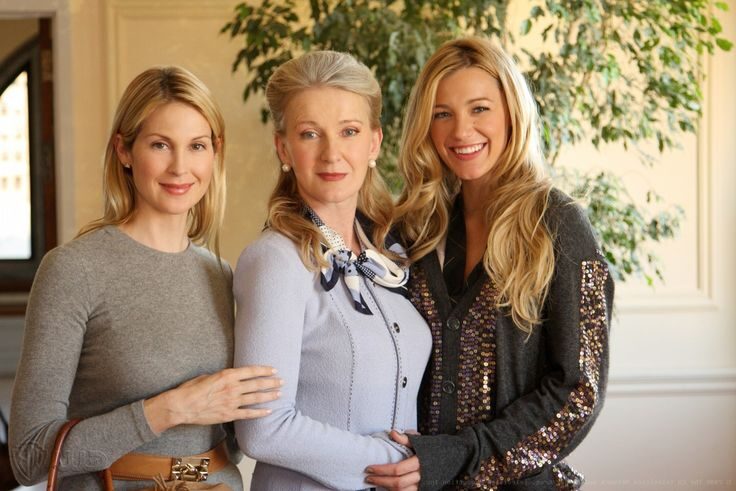Traveling alone can be a tricky thing. In theory, there are no limits to what you can do because there isn’t anyone else to please, but it’s still easy to get swept up in other people’s must-see recommendations and blindly follow the crowds. But after years of solo trips, I’ve found that my best adventures happen when I am intentional about the experiences I’m seeking out.
Case in point: Nashville, TN. Nashville has been on my bucket list for many years, so I jumped at the chase to travel there this month for a work conference. I only had one day to explore the city and, as you probably know, there is a lot to choose from in Nashville. I knew there were some areas to avoid—both for safety and peace of mind—so the heart of downtown with its bachelorette squads and drinking party bikes was not a match for me. Self-reflection determined that I was in the mood for somewhere beautiful, historical, and thought-provoking. I hoped that Cheekwood Estate & Gardens would fit the bill.
The History of Cheekwood
Leslie and Mabel Cheek built the Georgian-style estate in the 1930s with the help of superstar New York architect Bryant Fleming. Leslie Cheek, along with his cousins, were Industrial Revolution entrepreneurs, having established the firm of Nashville Coffee and Manufacturing which pioneered the selling of prepared, roasted, and blended coffee instead of raw beans. The company became a Nashville economic powerhouse, expanding with factories across the country. In a show of marketing genius, the company convinced Nashville’s Maxwell House hotel to use the coffee exclusively in their prestigious restaurants, later acquiring the Maxwell House name. In 1929 the business had gained one-third of the American coffee market and was sold to the Postum Company—later named General Foods—for a reported $42 million.

With their part of the financial windfall, the Cheeks’ bought 100 acres of land in Nashville’s ritzy neighborhood of Belle Mead and began preparations for what would become one of the finest examples of American Country Place Era Estates in the nation. Today, the Cheekwood Estate & Garden has 55 acres of cultivated grounds anchored by a 30,000 square mansion and museum which contains rooms decorated with period-appropriate furniture and antiques as well as art galleries showcasing works from permanent and traveling collections. The property includes 13 distinct gardens including the Blevins Japanese Garden and the Bracken Foundation Children’s Garden, as well as a 1.5-mile woodland trail featuring modern and contemporary outdoor sculpture.

First Impressions
My visit to Cheekwood began with driving down a long, winding road through one of the most peaceful and gracious neighborhoods I’ve ever seen. While only eight miles outside of Nashville proper, Belle Meade is immediately recognizable as a decadent throwback to southern plantation opulence. Some of the homes I passed were unassuming and others were impossibly grand, but the overall sense of luxurious seclusion was certainly seductive.
Walking from the parking area, I headed through gorgeous wrought iron gates and was instantly drawn into the fanciful East Gardens. Lots of families were enjoying this stroller-friendly area, some with elaborate picnics. The first section is the Turner Seasons Garden showcasing an intricate display called TRAINS! which had electric trains running on five tracks through a playhouse, walking bridge, children’s tunnel, and miniature fairy lands. Past the Herb Study Garden is the Children’s Garden, and I loved watching all the little ones interact with the structures. There was a brick and stucco Studio Pavilion with lots of windows, niches, and water features for kids of all ages to play in.

As with seemingly everything at Cheekwood, there’s a purpose to all the outdoor spaces. So, the turtle pond is not only a scenic rest area with fountains, it’s also a sanctuary for native turtles confiscated from the illegal pet trade. The Tennessee Wildlife Resources Agency oversees the area, and it serves as a rehabilitation center for the turtles as well as a living laboratory to teach children about the importance of caretaking.
Approaching the historic mansion, my first impression was one of restrained elegance. I would have expected that such a grand building would have loomed over the land, instead it seemed nestled into its luxurious surroundings. It is obvious that the landscape was an integral part of the design of the estate. In fact, the architect, Bryant Fleming, was also the landscape designer and was a key partner in furnishing the house as well. He went with the whole Cheek family to England for several months to research the preferred type of house, garden, and interiors. According to the newspapers at the time, the Cheek party returned to Nashville with four railroad freight cars filled with doors, iron work, mantels, wall panels, chandeliers, statuary, and furniture bought from some of the finest English country manors.

Inside the Mansion
The effect of all this money and design is a property that showcases seamless unification between the indoors and outdoors, as well as a surprising intimacy. Walking through the rooms, I could easily imagine the different spaces hosting family holidays as well as sumptuous parties. The Library managed to be both awe-inspiring and cozy. I wasn’t surprised to learn that this room was used primarily by the mother—Mabel Cheek—who was an avid reader. Her inlaid wooden desk still stands in the corner by the window, tucked underneath rows of leather-clad books on philosophy, art, history, travel, and classic literature. I could have easily stayed in the Library all day and explored her collection.

The Stair Hall and Rotunda are other examples of Cheekwood’s unique mix of personal and splendid. The main stair is said to have come from Queen Charlotte’s palace at Kew, England, and spirals into a grand classical dome. The dome is lighted by a skylight in the attic as well as a Bruce Munro chandelier purchased in 2015 that juxtaposes artistic modernity against the traditional sensibility. The Hall is also the location of a large gilt mirror that family lore attributes the building of the house to. The story goes that Leslie made a joke to his wife that the mirror she purchased was too big for their existing house and that they were either going to have to sell it or build another house big enough to fit it. Mabel said fine, build another house. Thus the concept for Cheekwood was born.

Wild Art on the Trail
For me, one of the most special parts of the grounds was the Carell Family Sculptural Trail. Clocking in at 1.5 miles, I almost skipped this section due to the 90 degree Tennessee heat, but I’m so glad I persevered. The trail was established in 1999 with an endowment from the Ann & Monroe Carell Foundation and it features ten works from internationally recognized artists. As I walked along the path, I was treated to one surprise after another, all perfectly positioned in nature to their best effect.
These are my four favorite pieces.
Jenny Holzer. Survival Series: In a Dream You Saw a Way…1997
I’ve been a fan of Jenny Holzer for many years, but I’m most familiar with her large-scale public artworks on billboards or LED signs. This small footstool of Vermont white marble sits just off the leaf-strewn path, inconspicuous and alluring in its sleekness. Inscribed on it is the text: IN A DREAM/YOU SAW A WAY/TO SURVIVE/AND YOU WERE/FULL OF JOY. The whole makes for a contemplative moment recalling poems or scriptures chiseled on grave markers.

Tom Czarnopys. Girdled Figure. 1989; Sophie Ryder. Crawling Lady Hare. 1997
I categorize these two sculptures together because of their visceral impact and rustic nature. At first, I wasn’t sure if Girdled Figure by Tom Czarnopys was art or simply a rotting tree stump. Close inspection revealed the trunk of a body entwined with bark and sticks to denote skin and veins. The place where the right arm would be is chopped and exposed with tree rings on the remnant. The effect is organic and ghastly. I kept wanting to get closer to the piece, with an overwhelming urge to dissect its parts like an archeologist uncovering a gruesome find.

The Crawling Lady Hare by Sophie Ryder is terrifying. It’s positioned in a clearing in the woods, and even though I could see it from quite a distance it was still menacing. The scale of the figure is immense, and the combination of woman and animal is fantastical in the spirit of a macabre Grimm fairy tale.

According to the literature, the work was commissioned during Ryder’s five-week residency at Cheekwood:
“Along with her family, who traveled with her from England, Cheekwood staff, trustees, and members of the community helped Ryder complete the massive sculpture, constructed by building up bundles of tangled, wound wire over its steel frame. Due to concerns over visitors wanting to touch or climb on the work and damage its malleable form, Crawling Lady Hare was sited farther back from the main path than other works on The Carell Trail. As Ryder states, the sculpture ‘sits well in its surroundings, and knowing that the trees will grow and change in the different seasons adds to the excitement for me.’”
Eric Orr. Cheekwood Prime Matter. 1997-98.
The last sculpture on the path, right before the Pet Cemetery, is Eric Orr’s Cheekwood Prime Matter. Looking like a massive doorway frame—or possibly a portal out of the underworld—the piece is a technically-advanced composition of primal elements. Water runs down the structure’s sides, rippling like a waterfall. Fire and fog spit out of the metal crosspiece on a scheduled cycle reminding the viewer of dragon’s breath. It’s a powerful end to the trail experience and is breathtaking in its scope.
Cheekwood Estate was completed in 1932 and seems to represent the last hurrah of American magnificence before the brutal onslaught of the Great Depression and World War 2. It’s sad to think that Leslie Cheek only enjoyed his magnificent dream for a short while before he died suddenly two years after it was finished. By 1960, daughter Huldah Cheek Sharp and her husband decided to bequeath the property to the state for public use as a botanical garden and museum of art. Today, Cheekwood is an icon of the Nashville community and hosts celebrations and events all year long. It has historical significance, of course, but it’s also alive and vibrant for everyone to enjoy now.
All photos/videos taken by Kai.




You definitely transported me to Cheekwood! Sounds amazing and I like that it’s not on the tourist must-do list.
These are the types of adventures I enjoy the most too.
The sculpture garden pieces were so fascinating. Especially the last two you shared. This adventure would be my kind of tourism also.